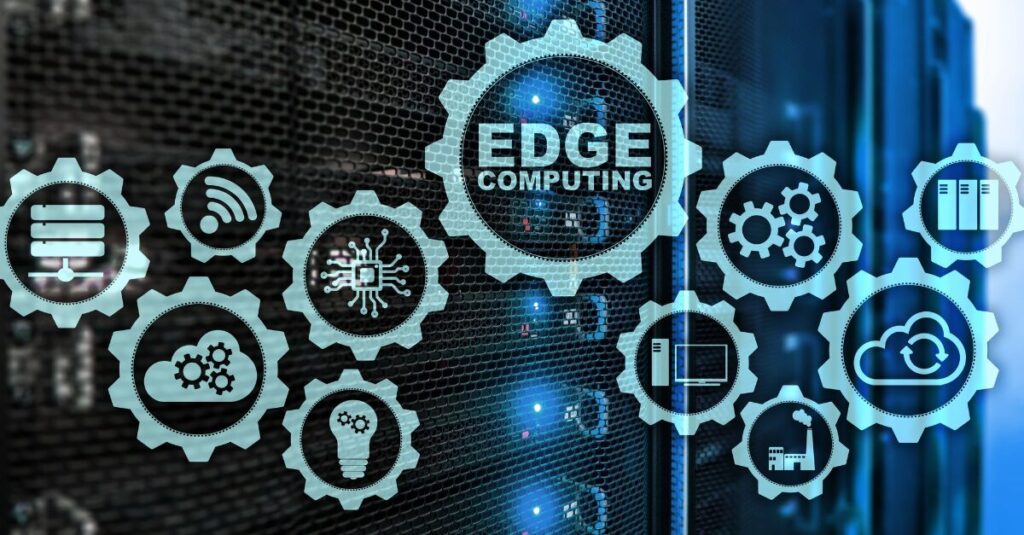Picture a bustling medical practice where doctors easily access patient records from their tablets, nurses receive real-time alerts about medication schedules, and administrative staff effortlessly manage appointments and billing.
This isn't a scene from a futuristic medical drama—it's the reality of healthcare powered by modern IT infrastructure. Yet, many healthcare practices are feeling the consequences of a widening gap between outdated systems and new technology.
The numbers tell a compelling story. The global healthcare IT market, valued at a staggering $303.4 billion in 2022, is on track for explosive growth. Industry experts project a compound annual growth rate of 13.5% from 2023 to 2032.
But why this massive investment? The answer is simple: modern IT infrastructure is no longer a luxury—it's a necessity.
The Urgent Call for Healthcare IT Infrastructure Modernization
Imagine trying to run a modern medical practice with technology from the 1990s. Many healthcare providers are doing just that, relying on outdated systems barely hanging on by a thread.
Modern IT is essential for enhancing operational efficiency, boosting the quality of care, and giving us a fighting chance against the next public health crisis.
The Healthcare Information and Management Systems Society (HIMSS) is sounding the alarm, calling for a whopping $36.7 billion investment over the next decade to drag our public health data infrastructure into the 21st century.
So, what's driving this mad dash to modernize? Let's break it down:
1. Enhanced Patient Care

Modern IT systems significantly improve the quality of patient care by streamlining clinical workflows and reducing the likelihood of errors.
These advanced systems enable healthcare providers to access comprehensive patient information quickly and accurately, leading to more informed decision-making and improved patient outcomes.
2. Operational Efficiency

Up-to-date technology infrastructure is crucial for maintaining smooth operations in healthcare settings. Modern systems minimize downtime, automate routine tasks, and improve department communication.
This increased efficiency reduces operational costs and allows healthcare professionals to focus more on patient care than administrative tasks.
3. Robust Security and Compliance

Modern healthcare IT infrastructure incorporates advanced security measures to protect sensitive patient data. These systems are designed with built-in safeguards against cyber threats and unauthorized access, significantly reducing the risk of data breaches.
Modern IT solutions can also be developed with regulatory compliance in mind. At PEAKE, we build our solutions to help healthcare organizations adhere to regulations such as HIPAA.
Healthcare IT Today reports that healthcare providers who've modernized their IT infrastructure are seeing operational costs shrink and data processing capabilities soar.
As healthcare organizations modernize IT, two key technological advancements stand out: cloud migration and edge computing. These technologies each offer unique benefits and address specific challenges in healthcare delivery.
The Magic of Cloud Migration

The healthcare industry is experiencing a paradigm shift in how it manages and accesses data, and cloud migration is at the forefront of this transformation. As medical practices move away from traditional on-premises systems, they're discovering possibilities that extend far beyond simple data storage.
1. Flexibility and Accessibility
At its core, cloud migration in healthcare is about flexibility and accessibility. It's breaking down the physical barriers that once confined patient data to specific locations or devices.
Now, healthcare professionals can securely access critical information in the operating room, at a remote clinic, or responding to an emergency in the field.
2. Reduced IT Spend
Cloud migration is reshaping the economic landscape of healthcare IT. The American Hospital Association has reported a striking statistic: some healthcare providers have seen their IT expenditures decrease by up to 30% after transitioning to cloud-based systems.
This reduction stems from eliminating costly hardware maintenance and shifting to more efficient, scalable cloud services.
3. Real-Time Scaling

In the past, expanding IT capabilities often meant significant capital investment in new hardware and infrastructure. Cloud services have changed this equation.
Healthcare organizations can now scale their IT resources up or down in real-time, aligning their technological capabilities with patient needs and organizational growth without the burden of physical infrastructure limitations.
4. Security Monitoring
While it may seem counterintuitive, many cloud providers offer security measures that surpass what individual healthcare organizations can implement independently.
These providers invest heavily in state-of-the-art security protocols, regular updates, and dedicated cybersecurity teams – resources that might be out of reach for smaller healthcare practices.
5. Industry Collaboration

Cloud migration is facilitating unprecedented levels of collaboration in healthcare. Specialists can now easily share and analyze medical imaging from different locations.
Researchers can collaborate on large-scale studies with data from multiple institutions, and healthcare systems can integrate their services more seamlessly than ever before.
From supporting telemedicine initiatives to powering AI-driven diagnostic tools, cloud technology is becoming the backbone of innovation in healthcare IT. The transition to cloud-based systems is a strategic move towards more efficient, accessible, and innovative healthcare delivery.
As more healthcare providers recognize these benefits, we're likely to see an acceleration in cloud adoption across the industry, fundamentally changing how healthcare IT operates in the years to come.
Edge Computing: Advancing Healthcare at the Point of Care

Edge computing brings data processing and analysis closer to the source of information generation. This shift is particularly significant in healthcare, where rapid data processing can have life-saving implications.
What is edge computing?
Edge computing in healthcare is the practice of processing data near the network's edge, where the data is generated, rather than in a centralized data-processing warehouse.
This approach revolutionizes how healthcare providers manage and utilize the vast amounts of data generated by medical devices, wearables, and other healthcare technologies.
What are the benefits of edge computing?

One of the primary advantages of edge computing in healthcare is its ability to reduce latency significantly. According to research by Grand View Research, edge computing can decrease data processing latency by up to 70%.
This delay reduction can be life-changing in healthcare scenarios where split-second decisions are critical, such as in emergency rooms or during surgical procedures.
Beyond speed, edge computing enhances healthcare IT systems' reliability.
By processing data locally, edge computing ensures that critical operations can continue even in the event of network disruptions. This resilience is crucial in healthcare, where continuous access to patient data and monitoring systems is essential for providing uninterrupted care.
Data security is another area where edge computing offers substantial benefits.
By processing sensitive patient data locally, edge computing minimizes the risk of data breaches during transmission. This localized approach to data handling can help healthcare organizations better comply with stringent data protection regulations while maintaining patient privacy.
The applications of edge computing in healthcare are diverse and growing.
In telemedicine, edge computing enables real-time, high-quality video consultations by processing data closer to the patient and healthcare provider.
In remote patient monitoring, it allows for immediate analysis of patient data from wearable devices, enabling faster responses to changes in patient conditions.
Edge computing is also crucial in integrating Internet of Medical Things (IoMT) devices. As medical practices and clinics increasingly rely on connected medical devices, edge computing provides the necessary infrastructure to manage and process the enormous volume of data these devices generate without overwhelming central networks.
As healthcare organizations continue to modernize their IT systems, integrating edge computing capabilities will be crucial for those seeking to leverage the full potential of emerging healthcare technologies.
The Future is Now

As we look to the future, one thing is certain: the modernization of healthcare IT infrastructure will continue to play a pivotal role in advancing medical care and improving patient outcomes. The impact can be felt across every aspect of healthcare delivery, from streamlined clinical workflows and reduced errors to improved data security and regulatory compliance.
However, modernizing your IT can be challenging. It’s important to partner with a professional experienced in the healthcare industry. At PEAKE, we specialize in guiding healthcare organizations through IT modernization, offering tailored solutions that address each practice's unique needs.
Schedule a conversation today or visit our website to learn how PEAKE can help your practice confidently step into the future.